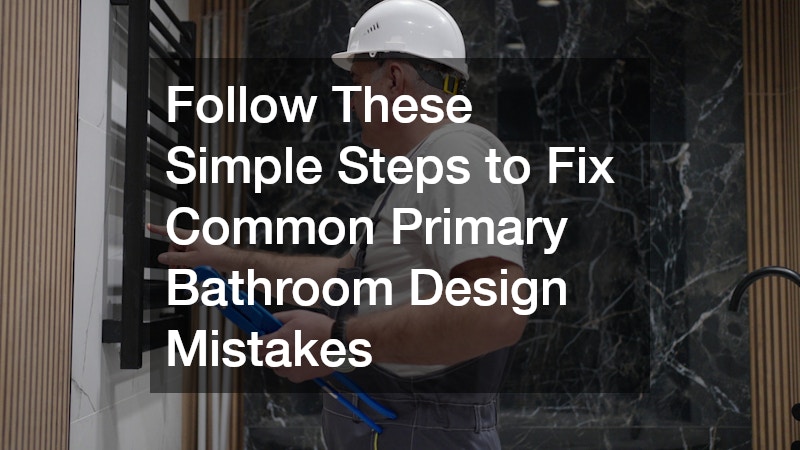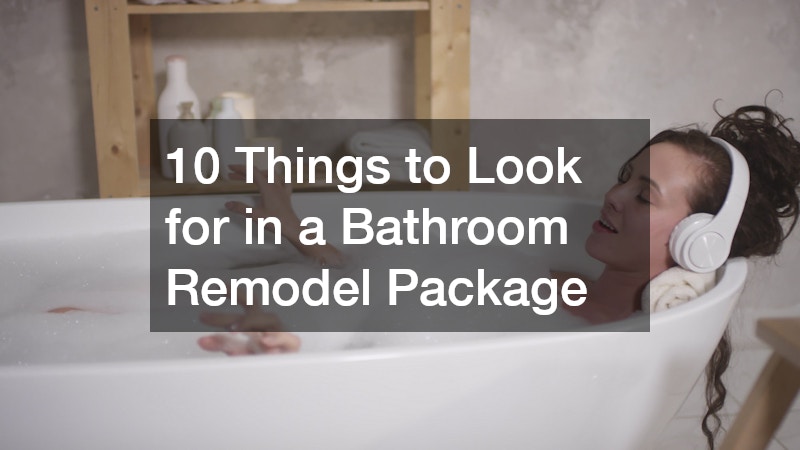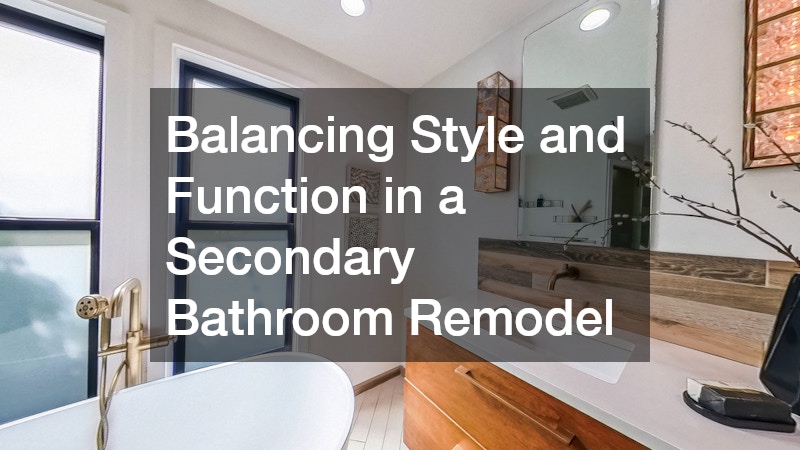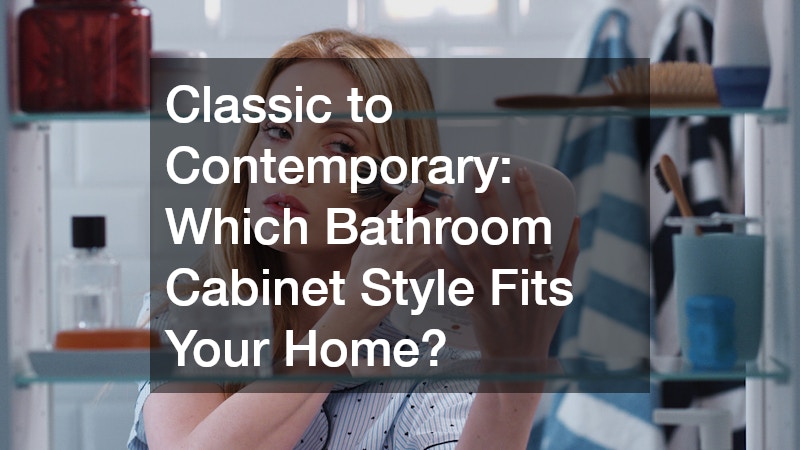Follow These Simple Steps to Fix Common Primary Bathroom Design Mistakes
Renovating a primary bathroom is one of the most rewarding ways to enhance your home, but it’s also a space where mistakes are easy to make. From poor layouts to outdated finishes, even small errors can impact both style and functionality. Common problems include inefficient traffic flow, inadequate storage, insufficient lighting, and water-related damage. Left unchecked, these issues can create ongoing maintenance challenges and reduce the comfort of your daily routines. Fortunately, most mistakes can be corrected with thoughtful planning, attention to detail, and guidance from professionals. This guide walks you through the most common primary bathroom missteps and provides actionable steps to fix them. By addressing layout, fixtures, lighting, storage, water management, and finishes, you can transform your bathroom into a functional, stylish, and long-lasting retreat that improves your home’s value and enhances everyday comfort.
1. Fixing Poor Layouts and Traffic Flow
One of the most frequent primary bathroom design errors is a poor layout. Fixtures placed too close together or pathways that feel awkward can make even a large space feel cramped. Inefficient traffic flow can lead to frustration during daily routines and may limit opportunities for storage or other functional improvements. To address this, start by mapping your bathroom’s dimensions and evaluating how you move between key areas like the vanity, shower, and toilet. Consider whether repositioning fixtures, widening doorways, or rearranging storage solutions could improve usability.
Collaborating with a bathroom remodeling company can provide invaluable insight. Professionals can identify structural obstacles, plumbing conflicts, or ventilation challenges that you might not notice on your own. They can also suggest creative solutions, such as floating vanities or repositioned tubs, that improve both movement and visual appeal. Optimizing layout ensures the bathroom is safe, efficient, and comfortable for everyone who uses it.
2. Upgrading Dated Fixtures and Hardware
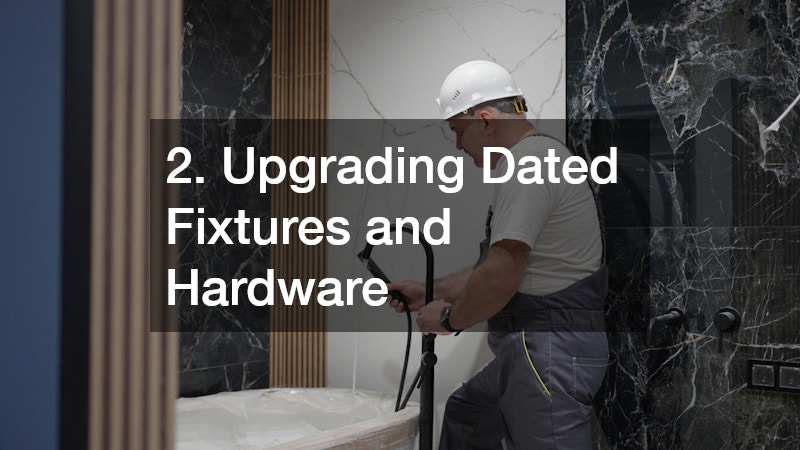
Old or mismatched fixtures are a subtle yet impactful mistake. Leaving outdated faucets, drawer pulls, or towel bars in place can make even a renovated space feel unfinished. Upgrading these elements ensures a cohesive look throughout the bathroom. Pay attention to finishes that complement your chosen color scheme and overall décor.
Small changes, like replacing cabinet hardware, can dramatically improve aesthetics and functionality. Knobs, handles, and hinges that match your style help unify the room, making it feel intentional and well-planned. High-quality hardware also ensures durability and smooth operation for years of daily use. Coordinating fixtures across sinks, vanities, and storage units avoids visual clutter, creating a clean, polished atmosphere. Updating hardware is one of the most cost-effective ways to refresh your bathroom while adding practical benefits that enhance everyday usability.
3. Improving Lighting and Ventilation
Proper lighting and ventilation are essential for both comfort and long-term maintenance. Poor lighting makes a bathroom feel dim and uninviting, while insufficient airflow encourages mold, mildew, and moisture-related damage. Layered lighting solutions, including overhead lights, task lighting around mirrors, and accent lights near vanities, create balance and highlight design features effectively. Task lighting is especially important for grooming tasks such as shaving or applying makeup.
Adequate ventilation is equally critical. Installing or upgrading exhaust fans prevents moisture buildup, protects finishes, and improves air quality. In more complex situations, local plumbers can inspect your systems, optimize airflow, and ensure compliance with building codes. Properly planned lighting and ventilation not only enhance aesthetics and usability but also prevent structural damage. By addressing these elements, your primary bathroom can remain bright, comfortable, and long-lasting.
4. Choosing the Right Countertop Surfaces
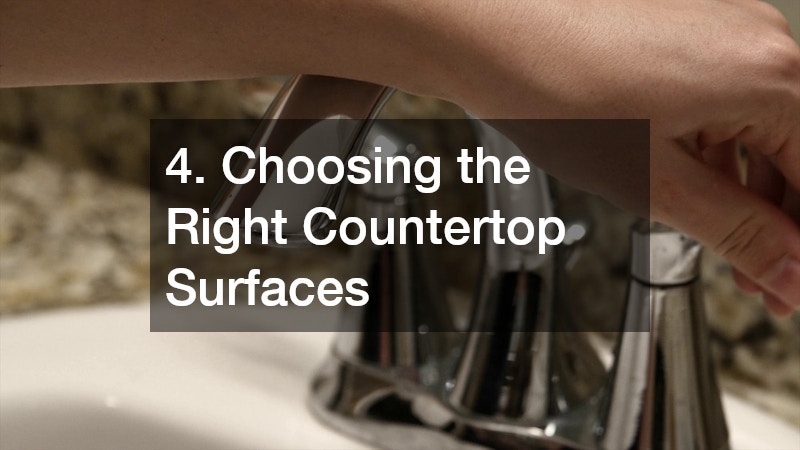
Countertops are one of the most heavily used surfaces in a primary bathroom, yet they are often overlooked during planning. Materials that are too soft, porous, or high-maintenance can stain, chip, or deteriorate over time. Selecting the right surface improves both durability and appearance.
Materials such as quartz or granite provide longevity, visual appeal, and easy maintenance. Using professional countertop services ensures precise measurement, cutting, and installation, preventing gaps or uneven edges. Proper installation also protects seams, edges, and finishes from damage over time. Choosing the right countertop enhances your bathroom’s functionality, complements your design, and ensures your investment stands up to daily use. Well-selected surfaces combine beauty, durability, and practicality, forming a centerpiece for both design and daily routines.
5. Addressing Shower and Bath Areas
Showers and tubs are central features in a primary bathroom, yet they are often the source of functional issues. Poorly designed or maintained showers can be difficult to use and hard to clean, and drainage problems can cause long-term water damage. To address these issues, evaluate accessibility, ease of maintenance, and storage. Built-in niches or shelves keep toiletries organized, minimizing clutter and water exposure.
Installing modern shower doors, such as frameless or semi-frameless designs, improves both appearance and usability. These doors are easier to clean, resist mold buildup, and enhance accessibility. Thoughtful placement and proper sealing prevent leaks and water-related damage, maintaining both functionality and aesthetics. By focusing on the shower and bath area, you create a reliable, stylish, and low-maintenance space for daily use and relaxation.
6. Selecting Appropriate Window Treatments

Windows influence light, privacy, and energy efficiency, yet many primary bathrooms have poorly chosen treatments. Using the wrong materials can result in excess moisture, warping, or a lack of privacy. Moisture-resistant options, such as shutters, faux wood blinds, or treated shades, are ideal for humid environments. They allow light to enter while protecting surfaces and maintaining privacy.
Professionals who specialize in window treatments ensure accurate measurements and secure installation. Properly fitted treatments resist warping, sagging, and moisture damage, while enhancing the bathroom’s visual appeal. Thoughtful selection of window coverings balances aesthetics, privacy, and functionality. By investing in suitable treatments, you protect your finishes, maintain natural light, and create a comfortable, stylish primary bathroom.
7. Protecting Against Water Damage
Water damage is a leading cause of costly problems in primary bathrooms. Leaks, insufficient sealing, and high humidity can ruin floors, walls, and cabinetry. Preventive measures, including moisture-resistant materials, proper caulking, and timely inspections, are essential to safeguard your space.
In the event of water damage, a water restoration service can repair structural issues and prevent further problems, such as mold or wood rot. Prompt intervention limits damage and protects your investment. Incorporating water-resistant finishes and regular maintenance reduces the likelihood of leaks or deterioration over time. Proper water management ensures your primary bathroom remains functional, safe, and attractive for years.
8. Maintaining Hot Water and Plumbing Systems
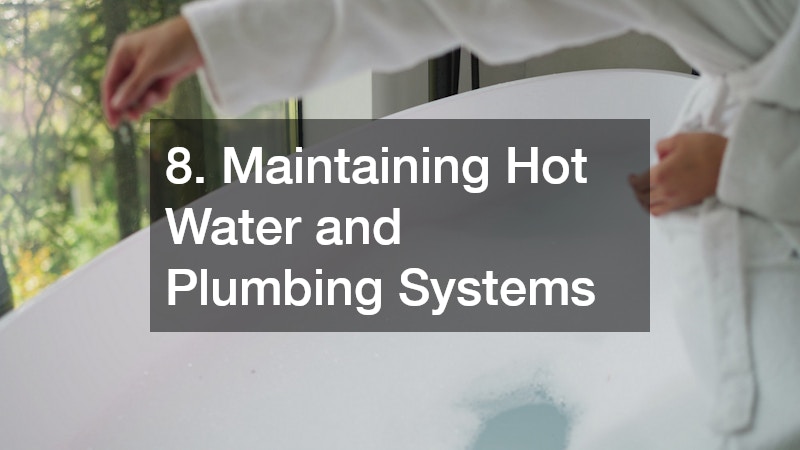
Reliable hot water and plumbing are essential in a primary bathroom. A failing hot water heater or outdated plumbing can reduce comfort and lead to expensive repairs. Regular inspections and maintenance improve system efficiency and prevent unexpected problems.
Hiring local plumbers to check pipes, valves, and water pressure ensures early detection of leaks or corrosion. Properly maintained plumbing protects cabinetry, flooring, and fixtures from water damage. Additionally, routine maintenance increases energy efficiency and extends the life of your hot water system. Addressing plumbing proactively guarantees your bathroom remains convenient, comfortable, and low-maintenance for daily routines.
9. Optimizing Water Quality
Hard water can leave stains, damage fixtures, and shorten the life of surfaces. Installing water softeners protects plumbing, improves cleaning efficiency, and prolongs the lifespan of your bathroom finishes. Soft water reduces scale buildup on tiles, faucets, and shower doors, keeping them cleaner and more attractive.
Professional installation ensures the system is tailored to your home’s water hardness and usage. Soft water also enhances the effectiveness of soaps and cleaning products, making routine maintenance easier. Improving water quality is a long-term investment in both aesthetics and functionality, helping your primary bathroom maintain its beauty and efficiency over time.
10. Updating Paint and Wall Finishes
Paint color and wall finishes significantly influence the bathroom’s style and durability. Using standard interior paint in a humid space can lead to peeling, cracking, or mold growth. Moisture-resistant paints protect walls and maintain appearance longer.
Hiring professional painting services ensures surfaces are properly prepped, primed, and painted with bathroom-grade products. Proper technique prevents streaks, bubbles, or uneven coverage. Thoughtful color selection complements fixtures, hardware, and tile finishes, creating a cohesive look. Investing in high-quality paint and professional application preserves the room’s aesthetic, reduces maintenance, and extends the life of your renovation.
11. Adding Storage and Organization
Clutter is a common primary bathroom problem. Without adequate storage, countertops become crowded and the space feels chaotic. Solutions include custom cabinetry, open shelving, and built-in organizers. Efficient storage keeps items accessible yet out of sight, creating a clean and functional environment.
Even small improvements, such as updating cabinet hardware, enhance usability and style. Coordinated storage solutions support everyday routines, making it easier to maintain a tidy space. Well-planned organization improves both function and appearance, transforming your primary bathroom into a practical and relaxing retreat.
12. Avoiding Common Flooring Mistakes
Flooring choices affect safety, durability, and comfort. Slippery or water-sensitive materials can create hazards and increase maintenance costs. Selecting water-resistant, durable options like tile, treated hardwood, or vinyl ensures longevity.
Bathrooms with previous water issues may require consultation with a water restoration service to ensure subfloors are sound. Proper installation prevents future damage and improves performance. Well-chosen flooring protects your investment, enhances aesthetics, and ensures your primary bathroom remains safe, functional, and visually appealing.
13. Integrating Technology and Comfort Features
Modern primary bathrooms can benefit greatly from incorporating smart features and advanced technology. Heated floors, programmable showers, sensor-activated faucets, and advanced ventilation systems are just a few upgrades that enhance comfort, convenience, and energy efficiency. These additions make daily routines more enjoyable, whether it’s stepping onto warm tiles on a chilly morning, customizing shower temperature settings, or ensuring the room stays dry and well-ventilated. Integrating technology also allows homeowners to create a more personalized experience, improving both practicality and luxury in the space.
Working with a bathroom remodeling company ensures that plumbing, electrical systems, and smart devices are properly coordinated and safely installed. Professionals can handle wiring, plumbing connections, and system integration to prevent malfunctions and reduce the risk of future issues.
14. Coordinating All Renovation Details
A cohesive design is essential for creating a polished and inviting primary bathroom. When fixtures, finishes, and decorative elements clash or feel mismatched, the space can appear disjointed and less relaxing. Common mistakes include combining hardware finishes that do not complement each other, selecting tile or countertop materials that clash with cabinetry, or layering colors and textures without a unifying vision. Even small inconsistencies, such as a faucet that does not match cabinet handles, can disrupt the overall aesthetic and make a renovation feel incomplete.
Working with specialists ensures that all elements are coordinated for both style and functionality. Professionals can help select finishes, colors, and textures that complement one another while also recommending layout adjustments that maximize usability. Attention to these details enhances the overall atmosphere of the bathroom, creating a space that is visually harmonious, highly functional, and satisfying for years of everyday use. Careful coordination also protects your investment by ensuring the bathroom remains timeless and appealing.
15. Planning for Long-Term Maintenance
Maintenance planning is essential for a functional and long-lasting primary bathroom. Choosing durable, moisture-resistant materials for floors, countertops, and cabinetry reduces wear, prevents water damage, and limits cleaning demands over time. Thoughtful material selection, combined with high-quality finishes, ensures that daily use and exposure to humidity do not compromise the room’s appearance or functionality. In addition to selecting the right materials, implementing a regular maintenance schedule is critical. Routine checks of plumbing fixtures, grout, caulking, and seals help identify minor issues before they escalate into costly problems.
Regular inspection of hot water heaters, water softeners, and plumbing systems ensures early detection of leaks, corrosion, or pressure inconsistencies. Addressing these concerns promptly protects cabinetry, flooring, and walls from damage while keeping your bathroom fully operational. Proactive upkeep, including cleaning drains, testing ventilation, and replacing worn hardware, preserves your investment and maintains comfort and safety.
Correcting common primary bathroom mistakes requires careful attention to layout, fixtures, lighting, storage, water systems, and finishes. Combining thoughtful planning with professional guidance and proactive maintenance creates a bathroom that is both visually appealing and highly functional. By following these strategies, homeowners can transform their primary bathroom into a stylish, comfortable, and durable retreat that enhances everyday routines, supports long-term value, and remains a reliable, enjoyable space for years to come.
